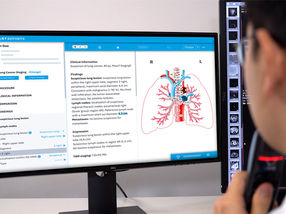Healthcare market fast emerging as a driver for video conferencing
Mobile engagement and secure access are key factors influencing vendor selection among healthcare firms
The rising popularity of video conferencing in healthcare is creating short and long-term opportunities for conferencing service providers (CSPs) to deliver both the required infrastructure and endpoints. The signs for market growth are indeed positive. The improved quality of video technology, demographic changes in Europe and demand for cost effective solutions are driving uptake. However, challenges surrounding deployment of services and security exist.
New analysis from Frost & Sullivan, Video Conferencing for Healthcare, reveals that video conferencing offered as a service to patient's homes will be a key area of growth for the market in Europe. The convenience of receiving treatment from home can be a major benefit to the elderly, disabled, those suffering from chronic conditions, and rural dwellers. Video conferencing can also facilitate post-discharge programmes, specialist consultations, and physician collaboration and training.
“Rising incidence of chronic diseases, an ageing population, and budgetary pressures on healthcare organisations in Europe have combined to generate demand for solutions that simultaneously enhance care and reduce costs,” said Frost & Sullivan Information and Communication Technologies Research Analyst Mark Hickey. “A number of successful pilot programmes and early stage roll-outs are expected to keep the adoption rates of video conferencing services high.”
Although the cost associated with video conferencing services is decreasing, investment in new systems is still an issue for budget-conscious healthcare organisations. Concerns about the security and privacy of patient's data are ever present as services advance and more data is collected. Ensuring that only those with the correct authority can access content is a vitally important consideration when dealing with patient’s data.
Different regulatory environments across Europe present additional challenges to CSP’s in terms of service roll out. Business models used to deliver telemedicine solutions too vary widely across Europe. Hence, the role of different stakeholders in each healthcare system is an important consideration when vendors choose a business model to distribute their services.
“Mobile enablement is becoming a key factor for end users,” added Hickey. “With mobile use by both patients and healthcare professionals expected to increase in 2014 and beyond, delivering services on mobile platforms will be a key factor in sustaining adoption”
Most read news
Other news from the department business & finance

Get the life science industry in your inbox
From now on, don't miss a thing: Our newsletter for biotechnology, pharma and life sciences brings you up to date every Tuesday and Thursday. The latest industry news, product highlights and innovations - compact and easy to understand in your inbox. Researched by us so you don't have to.
























































